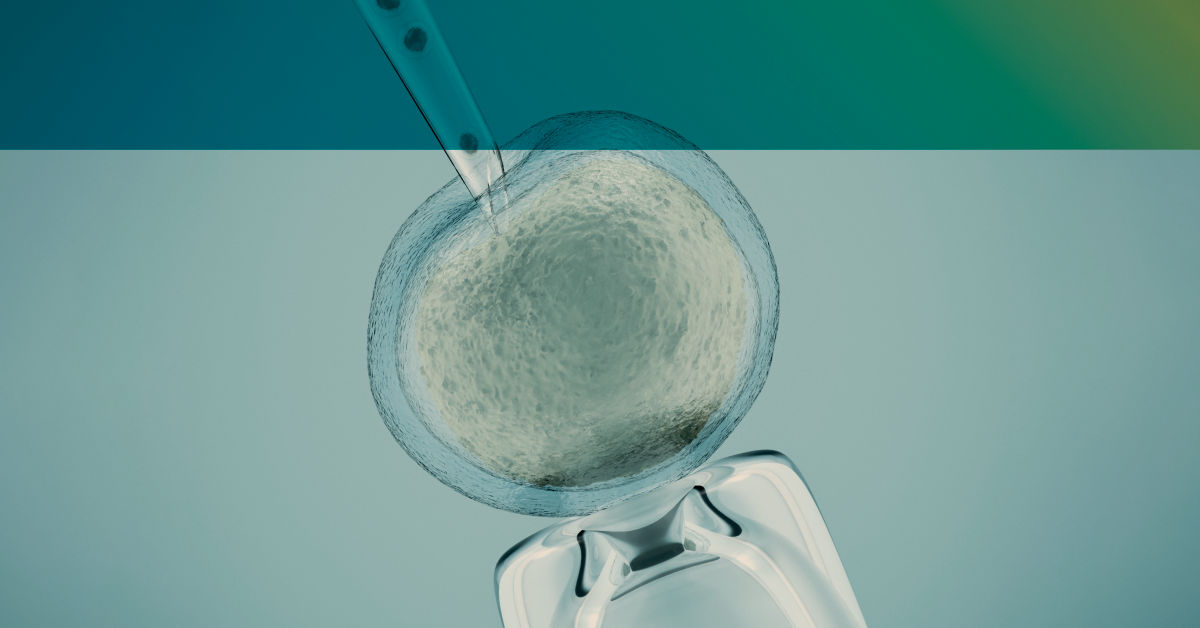
01 Mar Everything you need to know about IVF
Assisted reproduction is becoming more and more common nowadays and is being talked about more naturally. The reality is that we often know friends or family members who have had to resort to reproductive medicine to achieve pregnancy.
Factors such as the delay in the age at which many couples seek pregnancy, usually for economic or work reasons, means that they are unable to achieve pregnancy naturally and must undergo assisted reproduction treatment to achieve it.
Of all of them, one of the most frequent and with the best success rates in patients is in vitro fertilisation (IVF).
Below, we explain everything you need to know about this treatment.
What is In Vitro Fertilisation (IVF)?
In Vitro Fertilisation consists of the meeting of the egg and the sperm in the laboratory. With the collaboration of our embryologists, we help the fertilisation of the eggs that will give rise to the future embryos to take place.
Once these embryos have developed, the embryo or embryos with the best chances of achieving pregnancy are selected for transfer to the mother’s uterus.
At Fertty we always choose to transfer the embryos on their 5th day of development, when they reach the blastocyst stage. It is at this time when the embryo is at its best and we have been able to obtain the necessary information to be able to know which embryos have the greatest potential to achieve pregnancy.
What is an IVF treatment like?
Although it is not a complex treatment, there are several stages before the embryo transfer. We are going to try to explain them in a very simple way.
Firstly, it is necessary for the patient to receive a certain dose of medication to stimulate her ovaries. This is done so that we can obtain as many eggs as possible and in the best conditions. In this way, we will have a better chance of obtaining a greater number of embryos.
Once the patient is ready, we will proceed to the so-called ovarian puncture, that is, the extraction of the eggs. The ovarian puncture is performed in our operating theatre and requires a small dose of sedation to optimise the patient’s comfort. It lasts no longer than 20 minutes and, once she is in good condition, she can return home without any problems.
On the other hand, we must receive and analyse the semen sample from your partner. Once the process has been carried out, we select the spermatozoa that show the best conditions to fertilise the eggs and give rise to the embryos, which will remain in our incubators until the 5th day of development when, in blastocyst state, they will be transferred to the future mother.
From this point on, within 10-14 days it will be possible to know the result of the pregnancy test.
How is the treatment carried out in the case of patients who have to travel from another country?
When a couple decides to travel, in our case, to Barcelona to begin treatment to become pregnant, the first thing they should know is that they will find a medical team prepared to treat them in their own language.
We understand the inconvenience of having to travel abroad for this, so our goal is that you feel at home at all times and that, after the necessary days to perform the treatment, you return with all your doubts resolved and knowing that with Fertty you have made the right decision.
For this, after an initial online visit, you will be assigned a member of the team who will be your contact with the clinic at all times.
The patient will have to start the medication to stimulate the ovaries at home. The patient’s trusted gynaecologist will monitor the patient’s progress and send the results to the clinic’s coordinator.
In this way, the patient will only have to travel during the last phase of the treatment, that is, just before the moment of egg retrieval. At this point, the treatment will follow its conventional course until the embryos are transferred.
When the patient has recovered, she can return home and wait for the indicated time to undergo the pregnancy test.
Is IVF recommended for all kind of patients?
At Fertty we consider that each patient should be treated in a personalised way. That is to say, the same treatments are not always equally effective for one patient or another.
In this sense, it is essential that we know the patient’s history, as well as the state of her reproductive health and that of her partner, if she has one, to be able to make a diagnosis of the problem that is the reason why she is unable to conceive and to determine the best treatment.
As we have mentioned above, the reality is that as the patient’s age advances, the quality and quantity of her eggs begins to decline. We can say that, from the age of 35, this decline begins, which becomes more noticeable around the age of 37 and is alarming around the age of 40, with few options for the couple to achieve a natural pregnancy.
This is one of the reasons why in vitro fertilisation treatments are probably the most widely used in clinics, as the only possibility of fertilising a viable embryo is in the laboratory.
Apart from this, there are other reasons why in vitro fertilisation must be used to achieve pregnancy. The most common are:
- Couples or women in whom inseminations have failed.
- Patients with repeated miscarriages
- Patients with genetic diseases
- Fallopian tube obstruction
- Women with ovulation failure
- Polycystic Ovarian Syndrome
- Patients with endometriosis
- Severe male infertility
- Couples with infertility of unknown origin
Will you let us help you achieve your pregnancy?
You can ask for your first free appointment with our specialists here.
No Comments